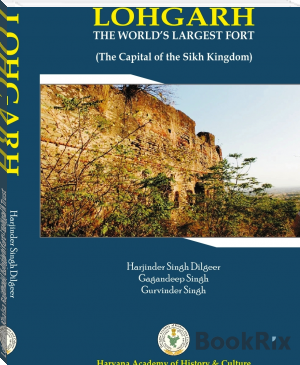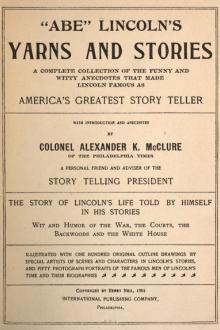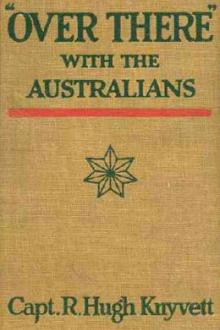Lohgarh - Khalsa Rajdhani, Lohgarh fort - Lohgarh Trust, S. Daljeet Singh Bajwa [early reader books .txt] 📗

- Author: S. Daljeet Singh Bajwa
Book online «Lohgarh - Khalsa Rajdhani, Lohgarh fort - Lohgarh Trust, S. Daljeet Singh Bajwa [early reader books .txt] 📗». Author S. Daljeet Singh Bajwa
Village Deen, Tahsil Barara, Ambala Village Nagla, Tahsil Saha, Ambala
(14)
Village Karauli, Tahsil Sahzadpur, Ambala
Village Korwa, Tahsil Sahzadpur, Ambala.
Village Rataur, Tahsil Raipur Rani, Panchkula
Village Laharpur, Tahsil Sadhura, YamunaNagar.(Local Residents belives that Guru Gobind Singh stayed here in 1688 ,for 13 days on his ways from Poanta Sahib to Ananpur Sahib.
(15)
Village Sangor, Tahsil Babian , Kurukshetra Britishers have made a police station on the bastion of Lohgarh. There are some points which are to be noticed. This village is quite in interior and no proper connectivity must be there during 19th century . The Britishers closed this police station few decade later as there was no crime. Now the question arise why the police station was established when there was no requirement, the only reason can be to keep a check on the rebels.
Village Babian, Kurukshetra . There were some bastions nearby like Karindwa, Bohwai, LakhiGarhi etc which are not available today.
(16)
Walls and other remnants of Lohgarh fort
Fortification wall in sector C-12 Canon Keeper found in Kalesar reserve forest
Revenue officials of Yamuna Nagar making survey of Lohgarh Fort.
Ramp found in sector C-32
Ramp found in sector C-20 Store rooms found on hillock of Lohgarh.
(17)
Fort wall having width of 3 meters found at Lohgarh. Fort wall having lamp keeper.
Canon keeper found at Lohgarh. Lohgarh bastions on hillock
Tunnel of Lohgarh, used for moving from one hill to another
(18)
Fortification wall
Remnants of Living rooms found at Lohgarh.
(19)
Dams and Water preservation System
Inspections were done along the rivulets coming out from the fort Lohgarh and it was found that the water even in the summer season existed inside these rivulets. Even aGer the reduction of precipitation in the area under study, the existence of water in the rivulets of the Lohgarh made the study more important. As per the geographical location these rivulets originated just 10
k.m. from the hillocks and flows down in the plains. As the inspection team moved towards the various hillocks, tangible evidences of a typical structured embankment along the sub rivulets (9 courses random rubble masonry) were found. Just aGer the structures a formation of water tanks was found which have a capacity to retain an ample amount of water on the hillock. These structures shows the planning of Sikh army, in anticipation of big war as the water the primary requirement for both men and horses. The availability of water on the hillock was also must as the defense morchas and the inhabitations of the Sikh army were on the higher contours. Moreover, if the water source was at the low height, the venerability to the enemy's attack increased. Therefore, these structures having curved in plan, constructed with dry rubble masonry was constructed by the Sikh soldiers under the guidance of Sikh Guru Sahiban. The pattern and the location of these structures are strategically placed before the water source at regular intervals of the rivulets.
(20)
Embankment Sketch-curved plan for storage of water, at different levels in fort Lohgarh, involving the different contours and topography. During the war the Persian sources had repeatedly reported that there is no seizer to Lohgarh fort and there was ample amount of supplies and amenities of Sikh soldiers. On the other hand the Mughals soldiers had a shortage of supplies and this lead to demoralization of Mughals army.
Embankments sketch plan with rubble masonry.
Checked dam found in sector 32 of Lohgarh Fort.
Checked dam found in sector 12 of Lohgarh Fort.
(21)
The check dam found in sector 2 of Lohgarh Fort.
The check dam found in sector 11 of Lohgarh Fort.
The check dam found in sector 22 of Lohgarh Fort
The check dam found in sector 18 of Lohgarh Fort.
The check dam found in sector 15 of Lohgarh Fort.
The check dam found in sector 17 of Lohgarh Fort.
The check dam found in sector 23 of Lohgarh Fort.
(22)
The check dam found in sector 29 of Lohgarh Fort. The check dam found in sector 19 of Lohgarh Fort.
The check dam found in Sector 21 of Lohgarh Fort. The check dam found in Sector 4 of Lohgarh Fort.
The check dam found in sector 5 of Lohgarh Fort. The check dam found in sector 24 of Lohgarh Fort.
The check dam found in sector 6 of Lohgarh Fort. The check dam found in sector 23 of Lohgarh Fort.
(23)
Pottery, Chakki etc. Found at Lohgarh
(Zone 2 & Zone 3)
Pottery found at Lohgarh. These jars were mainly used for storage of food grains. There is a clear inference that the preparation of war was made much earlier and Sikh soldiers never had a shortage of supplies during the Battle.
Heavy lime mortar, concrete was used in the construction of Lohgarh in order to resist the Mugal cannon. Lime mortar had been blended with brick powder and even aGer 400 years its strength is unmatched.
Alloy leG while making arms at Lohgarh by Sikhs. AGer melting, it could be used again. It is alloy of iron, zinc, chromium & copper. These are found in village Shahzadwala, Vansantoor and Bhagwanpur.
Various types of round shot made from dressed stone, found at Lohgarh. It is a solid projectile. Without explosive charge, it was fired from a cannon by the Sikh army against Mughals in Battle of Lohgarh
Multipurpose pulley used for extraction of oil from seeds, liGing water, liGing heavy material on a hilltop. The diameter of raising portion is 40 inches and depressed portion is 28 inches. The ropes and wood was used to operate it.
(24)
Okali-Musal found in Lohgarh – Main used for grinding spices, chilies and other food items. Famous Phrase of hindi 'Okhli mein sar diya to muslon se kya darna' . Diameter upper part 42 inches and lower 21 inches . Depth of Okali 12 inches.
Millstones or Chakki found in different sectors of Lohgarh and stones made chakkis were used for grinding wheat or other grains. Diameter of chakki found at Lohgarh, varies from 48 inches to 54 inches .
(25)
Toy Factory was installed near Lohgarh by Bhai Lakhi Rai Banjara. These toys are found at Lohgarh. Detail reference on this topic is made on page 24.
Broken pottery found in different sectors of Fort Lohgarh. These pieces are spouted pitchers, jugs, cooking pots, storage jars, bowls, lamps etc.
(26)
Dressed stone used for construction of fort Lohgarh. There is hole in every stone so that lime mortar can get its strength and each stone are bound with other one strongly.
Carved stones found at Lohgarh, clearly indicate that the fort was not constructed in a hurry and the Sikhs constructed it much earlier than Baba Banda Singh Bahadur.
(27)
Five sizes of bricks were used for construction of fort Lohgarh. Ist length - 7 inches, breadth
3.5 inches & width 1.5 inches, 2nd length -7 inches, breadth 5 inches & width 1.5 inches, 3rd length -10 inches, breadth 7 inches & width
1.5 inches 4th length -11 inches, breadth 6
inches &width 2 inches & 5th The size of the
brick is length -11 inches, breadth 6 inches & width 2 inches.
(28)
Places linked to Bhai Lakhi Rai VanjaraUnsung Hero
The family of Bhai Lakhi Rai Vanjara (1580- 1680) had been associated with Guru Nanak Sahib. Bhai Lakhi Rai Vanjara was the main person, w h o r a i s e d f u n d s f o r t h e construction of Fort Lohgarh. He was not only a rich trader but also a clever strategist and a warrior. He was the owner of the biggest Tanda (transporting and trading unit) and e m p l o y e r o f h u n d r e d s o f thousands of Vanjaras. Vanjaras t h r o u g h o u t t h e I n d i a n S u b Continent contributed for the construction of Fort Lohgarh. AGer the decline of the Mughal Empire,
the Britishers brought the Vanjaras under the Criminal Tribal Act. The name of Lakhi Shah Vanjara is mentioned in the Imperial Gazetteer of Ambala.
Mughals constructed a Mazar of Bhai Lakhi Rai Vanjara near Lohgarh.
(29)
Fort and Sarai of Bhai Lakhi Rai Vanjara near Fatehgarh Sahib.
Water Wells found in the Vicinity of Lohgarh constructed by Bhai Lakhi Rai Vanjara
So far 85 wells constructed by Bhai Lakhi Rai Vanjara have been found in the vicinity of Lohgarh, this clearly indicates the presence of trading Tanda's and Vanjara's near Lohgarh. Every well has a plate and the name of Lakhi Rai Vanjara inscripted on the plate. There are other important information pertaining to Sikh history available on these plates.
Budhi
(30)
Battuwala Alisherpur Majra
Mahilawali Bansewala
Vansantoor Baniyawala
Thaska
(31)
Palaces of Massa Rangar & Other Rangars
AGer martyrdom of Baba Banda Singh Bahadur, Sikhs were leG without a l e a d e r R a n g a r s w e r e deputed by the Mughals for the genocide of the Sikhs. Rangars not only killed the Sikhs, but also demolished the Fort of Lohgarh. Massa Rangar is believed to have lived in Yamuna Nagar from 1716 to 1740.
The remnants of Massa Rangar's haveli are available at village Machhrauli, Tehsil Bilaspur and remnants of other havelis of Rangars are present in Tehsil of Raipur Rani and Naraingarh.
(32)
Gurudwara Gorakpur (Pinjor) and Sikh Bastions
A Sikh bastions is found in village Gorakpur, located in Shivalik Hills, adjoining Pinjore. A Gurudwara has already been established in the remembrance of the humanitarian deeds of the S i k h a r m y u n d e r t h e leadership of Baba Banda Singh Bahadur.
(33)
NEWS CUTTING
(34)





Comments (0)